Fay Nicolson
A P E L02—22 November 2013
Start from the beginning. A is for Apple.
The hand traces a diagonal line.
The mouth opens.
An object is half complete, about to fall.
Almanac is delighted to present A P E L, a solo show by London-based artist Fay Nicolson.
For her exhibition at Almanac, the artist builds upon an ongoing investigation into the structuring roles of art, education and documentation, and ways of contaminating the gaps between systems of knowledge transferal. The exhibition’s title refers to the taxonomy of language and its role is structuring learning, with APEL referring to a framework of valuing alternative educational experience (Accreditation of Prior Experience and Learning).
Nicolson uses repetition and ‘play sense’ within the artist’s studio to unfold binary discussions around language and making, between tacit and implicit knowledge. Strategies of recording and material displacement give form to moments of hesitation – employing repetitive processes that fluctuate between practice and productivity.
Where the grid is a fiction used to denote spaces of equality, divorcing objects from contexts beyond their own qualities, this exhibition is an exploration of the weave, as an embodied structure. Pull one thread and the rest of the image is implicated, fraying at the edges of reality, its narrative unravels. Operating in the tentative space joining then - now - a possible future, surface, image, object and information jostle for visibility and value.
Drawing on the work and teachings of artists such as Josef and Anni Albers, the exhibition explores how material as a medium of slow, embodied knowledge can resist both language and authority. Moving from text to textiles, the weave allows for a diagonal movement across positions; questioning what it means to act in relation to something else; as a partner, a complement or support.
Fay Nicolson (Derby, 1984) lives and works in London. She studied at Royal College of Art and Central Saint Martins. Recent exhibitions and performances include: WORK WITH MATERIAL, Künstlerhaus Wien, Vienna (2013); OPEN CUBE, White Cube, London (2013); Bad Signs, PLAZAPLAZA, London (2012); A Small Hiccup, (with Oliver Smith) Grand Union, Birmingham and The Newbridge Project, Newcastle (2013); Quantum Leap, Embassy Gallery, Edinburgh and Malmö Konsthall (2013); Lecture Performance, Overgaden Institute of Contemporary Art, Copenhagen (2013); An Artist, Unlearning, David Roberts Art Foundation, London (2013).
This exhibition forms a part of The Immaterial Almanac, a series of collaborative projects and solo exhibitions with emerging artists who have made performance and labour part of their practice in experimental ways.
Centred on the possibilities for resistance stemming from the increasingly flexible, fluid and invisible ways of working and producing, the project engages with immaterial labour’s influence on the way we interact, learn and create value.
The Immaterial Almanac is supported using public funding by Arts Council England.
Rhetorical Boomerangs
George Vasey on the work of Fay Nicolson.
A P E L (A is for…)
Apples suggest something fundamental - at once gravitational and carnal. The apple is a cypher; the real action is elsewhere. A bitten apple and fallen fruit articulate different types of movement, the former is literal (gravity) and the latter is metaphorical (the shift from innocence to experience). One keeps us grounded while the other sends our eyes to the sky looking for redemption. Where one movement is inevitable, the other is about choice. To taste this forbidden fruit? It’s the first decision, and the one that all others are measured against.
P A R E
To pare is to trim, to literally cut away at something. It communicates elemental thoughts, and primary structures; peeling away of the skin to peer at the bones. We can see this enacted continually in Nicolson’s work. This subtractive impulse, the continual stripping back, recalls the high watermark of Modernist Abstraction. In different ways, these artists, architects and designers saw simplicity and reduction as an emancipatory drive towards a ‘greater truth.’
If we trace the etymology of the term abstraction back to its origins, it literally means to ‘withdraw.’ It is, perhaps, a paradoxical impulse to move towards (objects) and away (from subjects). The central question remains; how do we take abstraction out of an historical parenthesis and attempt to keep it animated? How do we keep it in a constant state of flux? Nicolson’s answer can be found in the hive-like quality of her practice - spread across disciplines and approaches. Seeking new collisions between the work and the world around it.
I’ve had choices since the day I was born…
When do you choose to become an artist? Every day. Can art be both funny and serious? Certainly. Artists ask questions, of objects, images, ideas, and of people. A question is a way of reducing choices. The best type of answer is one that demands another question. The practice of Fay Nicolson is in a perpetual state of Q & A. What does it mean to pick one question over another, one object over something closer at hand? When I look at Nicolson’s work I think of an artist who re-stages the same fundamental questions, and like a rhetorical boomerang, her answers bring us back round again.
Nomad, where you come from no one knows…
Working across print, drawing, watercolour, photography and installation (as well as curating and writing), Nicolson is a restlessly nomadic artist. Her graphic work best recalls the decorative and applied arts produced in the Bauhaus. This interest in abstraction is embedded in a practice concerned with modes of distribution alongside an acute sense of materiality and translation. Although Nicolson works largely within an abstract idiom, and despite her formal acuity, you wouldn’t necessarily state that she was an abstract artist. Refusing the universalising rhetoric of Modernism, she prefers incremental gestures to grand one-liners. The work has broad genealogies connecting it to historical antecedents across craft, fine art, fashion and design. The polymathic quality of her practice aligns it to the recent attempts to attach historical formalism to wider social, economic and political abstractions. [1]
Workin’ 9 to 5, what a way to make a livin'…
For one on-going series of works, Nicolson prints intimately scaled watercolours from gridded paper onto large sheets of silk. These works have previously been pinned onto gallery walls and draped from ceilings. Each installation pronounces different aspects of the work (pictorial and sculptural). Draped from the ceiling, the gallery becomes a type of skeleton - anchoring the work like bones in a body. We are consistently aware of the latent qualities in the materials, everything remains visible and in plain sight.
These works condense a number of key issues in Nicolson’s work of the last couple of years. By printing the watercolours much larger, the artist provides a microscope to the uneven and blotchy surfaces, amplifying their autographic character. The image starts to break down into its constituent parts; up close, paint becomes pixel. Each element collides with its opposite. This dialectical quality is a recurring motif within her work, dramatizing each component - taut is placed next to slack, hard materials on soft and so on.
Recalling geometric Nordic and Bauhaus tapestries and American Mid-Western fabrics, the work is brought into a 21st century dialogue with reproduction. Nicolson favours tertiary colours; leaf greens, browns and mustard yellows. The synthetic CMKY printing ink struggles to mimic the natural minerals of the watercolour. For Nicolson, this is a necessary rupture; it illustrates the translation of one object into another entirely different one and the inability of an absolute transition.
Editor, Editor…
When we look at Nicolson’s work, we are privy to a small part of a much larger project. Making a prodigious amount of work, the artist edits judiciously. What makes one image better than any other? Why this image rather than the one before or after? For another series, Nicolson photographs loose bits of wire, cut card and folded fabric (as well as a cut pear). Captured with a black-and-white analogue camera, the raking light casts biomorphic shadows that confuse perspective and depth of field. The photographs renounce the geometric binaries apparent in the artist’s draped works discussed previously in this essay. It is here that the artist explores different forms of decomposition, renouncing the horizontal/vertical axis in favour of a formlessness that recalls the Surrealist interest in categorical blurring. This is further articulated by the collective titles of the works, ‘Marginal Notes’. The evocation of the handwritten, rather than then the typographic, is telling - the scribble, doodle, and scrawl exist between something declarative and more intimate.
The choice of working with analogue photography provides boundaries: a beginning, middle, and an end. When we look at Nicolson’s interest in printing (both digital and analogue) we can see an artist attempting to insert tentative endings into an on-going process. Like the end credits of a TV drama, one feels, looking at Nicolson’s work, that it should be inscribed with a ‘to be continued’. This temporal quality of objects and ideas in continual flight suggests lines drawn in the sand, rather than marks chiselled in stone.
The temporality articulated within Nicolson’s practice is erratic, operating at different speeds - at once slow then quick, arduous then instant. The peripatetic nature of her work feels entirely contemporary; a nature that, to quote David Joselit [2], “replaces the aura of the art work for a type of buzz”. For Joselit, “buzz is to saturation what aura was to scarcity”, and one can parallel Nicolson’s interest in seriality as part of a broader move since the 60’s towards populations of images that are “dynamic forms arising out of circulation”. In other words, the image is at once static and mobile, and it embraces time as much as it explores space.
“The original is unfaithful to the translation”
Jorge Luis Borges
What does a thought look like? What do feelings sound like? Trying to turn one thing into another is like handling a greasy snake. The life of the studio is similar to the board of snakes and ladders. The artist is caught in a perpetual state between snake and ladder, working upwards only to fall back down and then start again. Nicolson’s working process recalls Johann Itten’s famous maxim that “play becomes party, party becomes work, work becomes play.”
If work produces anxiety, then play alleviates and absolves it. Artists are caught between the two; we can call it a type of ‘unproduction’. Nicolson’s work suggests forms of (un) learning where the hand is forced to repeat something until it becomes second nature. Latent knowledge dissolves the conscious decision with intuition. It replaces anxiety with reverie, and choice with chance. Intuition is another type of constraint. Why is something finished? Because I can feel it.
The Beginning is the End is the Beginning…
When do we end? Can we ever finish? Maybe we could say it is not a matter of when but how? I often think that choosing to make art is a choice between stasis and movement. It is a dissatisfaction that culminates in a desire to animate objects, materials and images, translating them from one thing into another. For all the anxiety wrought by this process, there exists that perfect moment where the answer demands another question. When the ending is just a set up for a sequel. So many times the follow up is a let down, nothing is quite how we remember it. The transformative is of primary concern to Nicolson - and with it, questions of one form leading to another, of objects coming to rest, of knowing what to leave out and put in.
How do we affect change? Why do we feel the need to assert our autonomy on an object? When does it start to answer back? It is a question clearly stated in the context of dissatisfaction with how things stand, and an attempt to kick them into shape. Sam Thorne, writing on the work of Michael Fullerton, suggests that the artist “replaces truth’s dogmatism with the search for conditions of possibility.” If truth proposes answers then possibilities suggest questions. We can see in possibility a model for the recursive loop where propositions and proposals can be continually modified. The model of the rhetorical boomerang is significant, in that the boomerang is about defeating gravity, and overcoming the inevitable. Using the requisite skills we can create possibilities through the production of choices, and this is where we leave Fay Nicolson, in her studio, trying to defeat gravity, to delay the inevitable and keep objects and images in motion.
-
We can look towards Maria Lind, Doug Ashford, Jan Verwoert, and David Joselit’s recent writing as exemplary.
- Joselit, David. After Art (2012)


Installation view

Installation view

Installation view
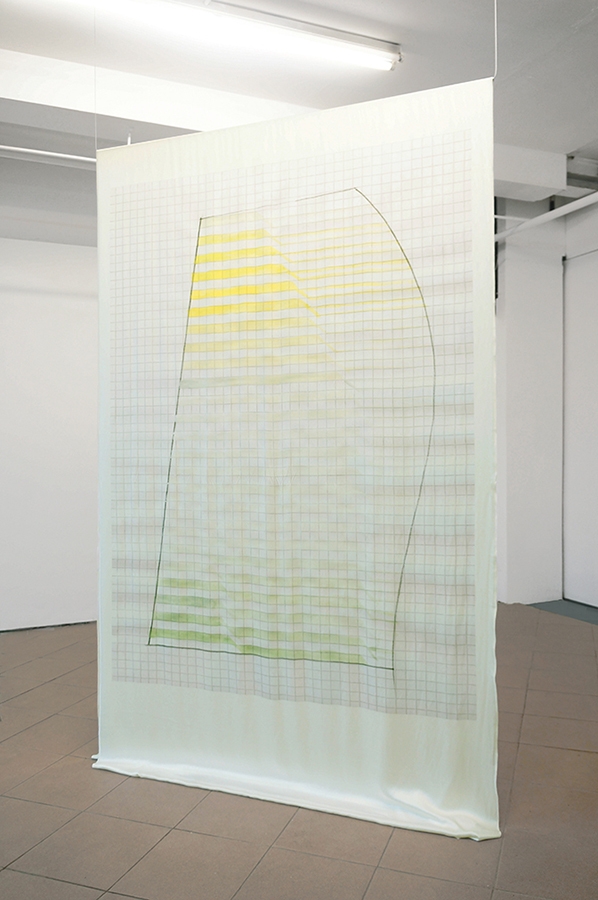
A P E L (I), 2013. Digital print on silk, steel bar.

Installation view

Installation view
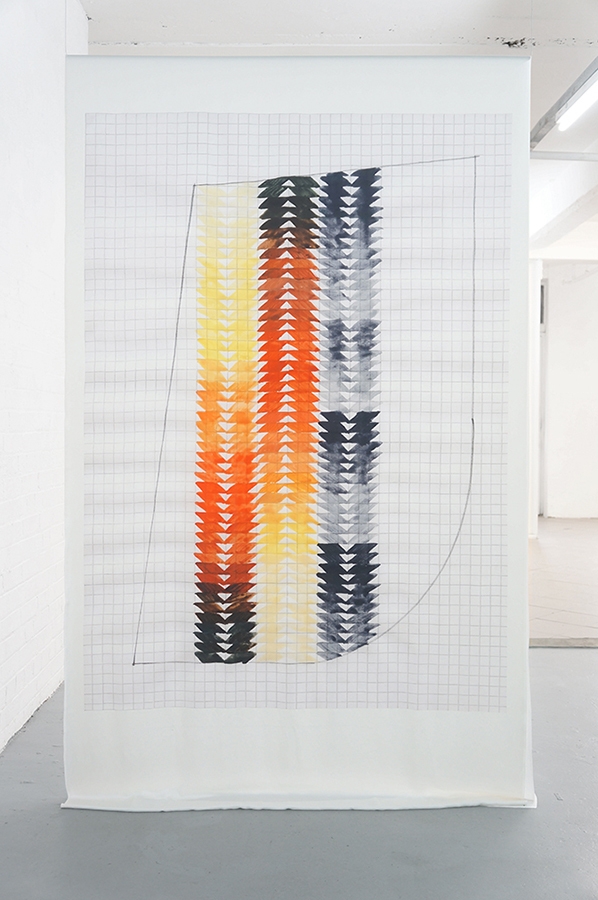
A P E L (III), 2013. Digital print on silk, steel bar.
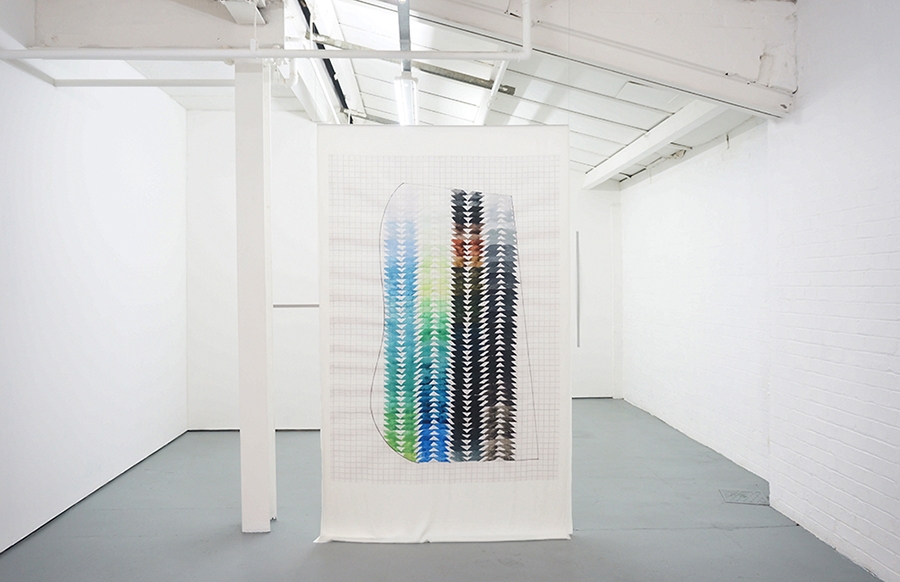
A P E L (II), 2013. Digital print on silk, steel bar.
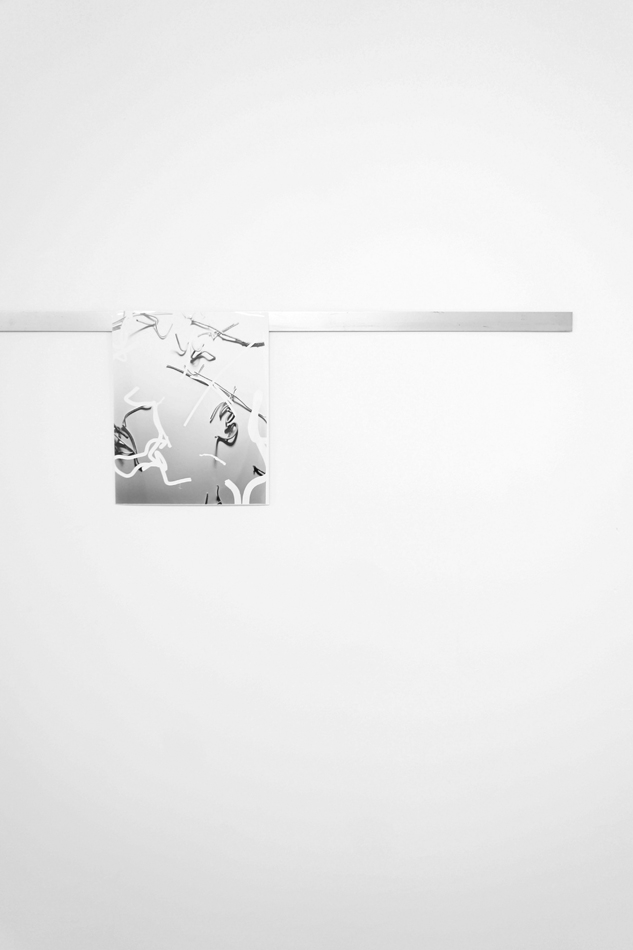
Marginal Notes (Disarray), 2013. Steel, magnets, hand printed photograph.
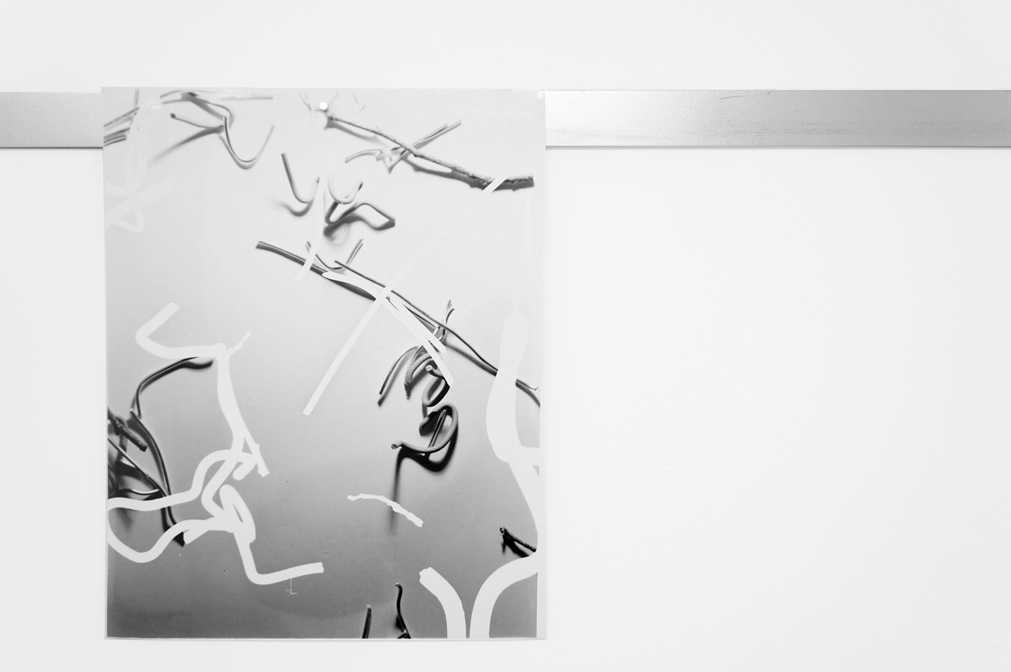
Marginal Notes (Disarray), 2013. (Detail)
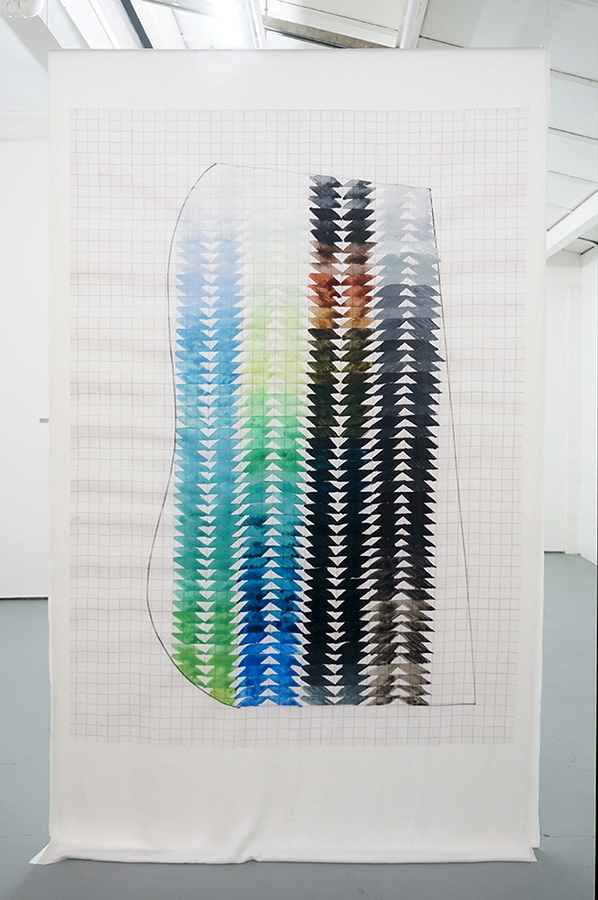
A P E L (II), 2013. Digital print on silk, steel bar.

(left) Marginal Notes (Fruit/Fold), 2013. Steel, magnets, hand printed photographs. (right) Marginal Notes ( ), 2013. Steel, magnets.
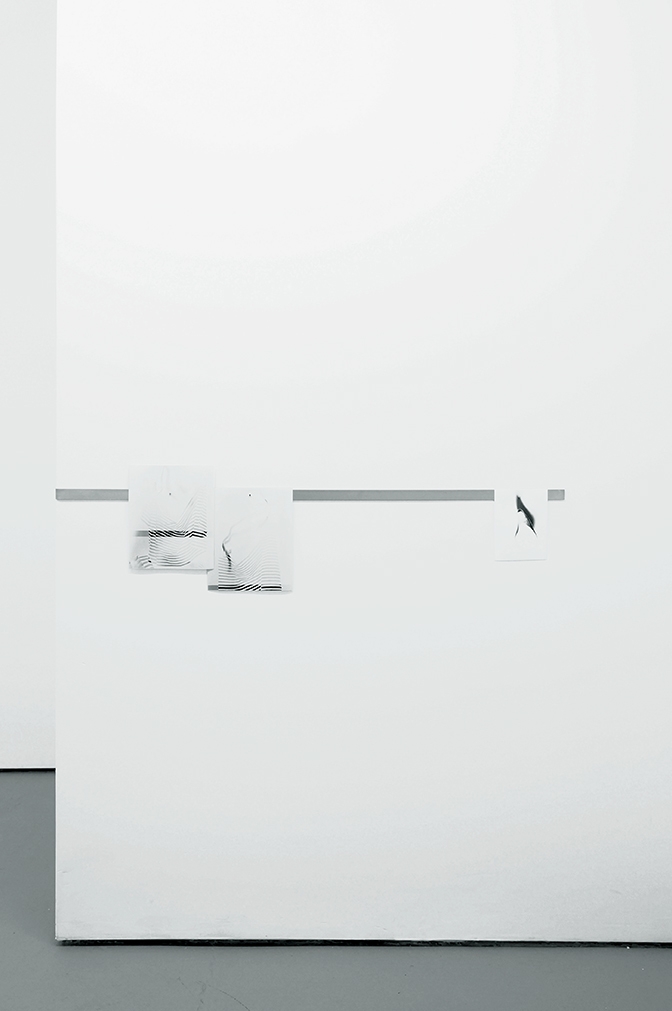
Marginal Notes (Fruit/Fold), 2013. Steel, magnets, hand printed photographs.
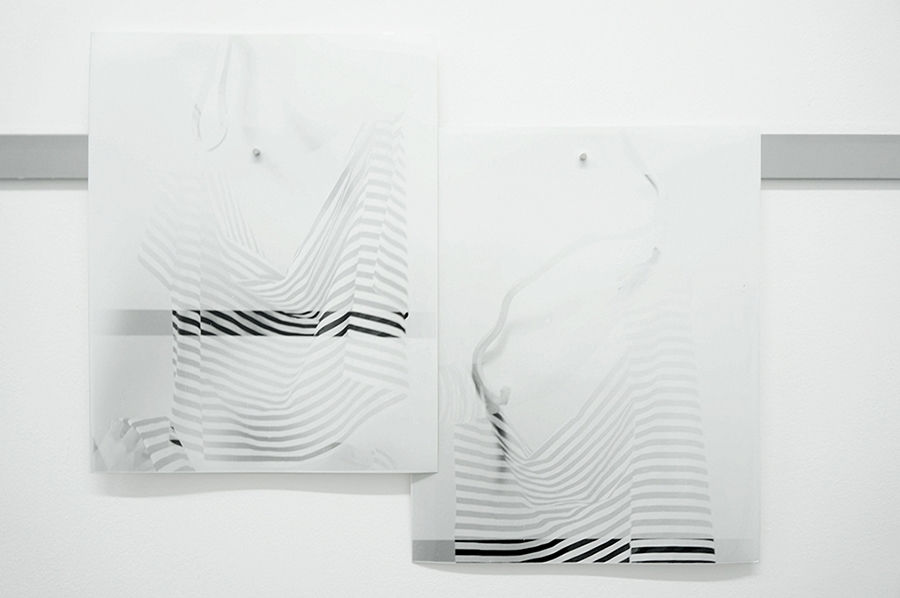
Marginal Notes (Fruit/Fold), 2013. (Detail)
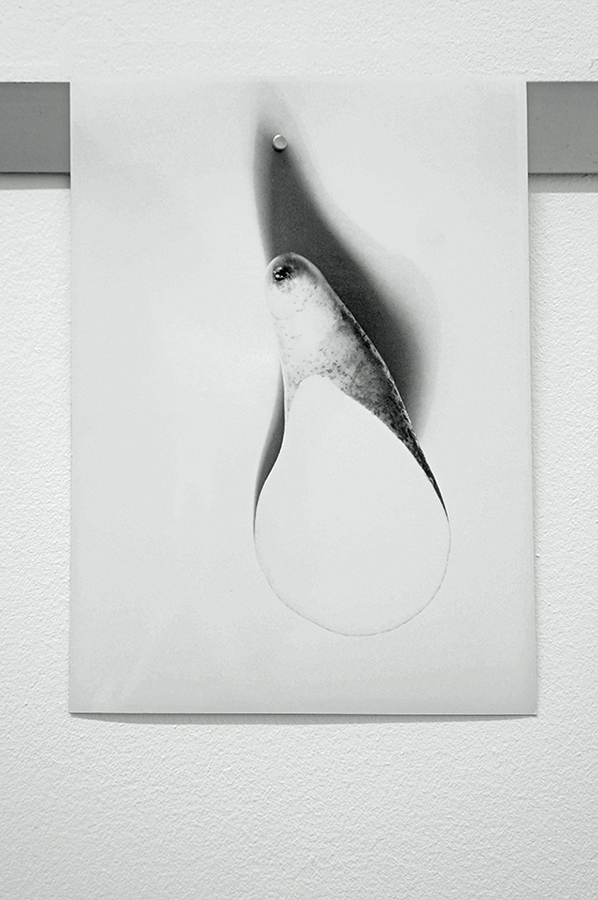
Marginal Notes (Fruit/Fold), 2013. (Detail)
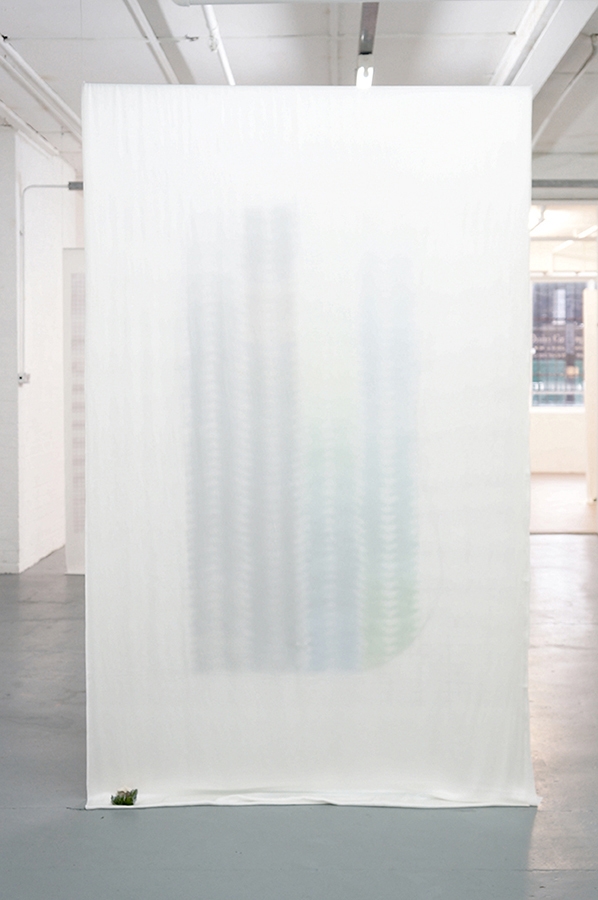
(center) A P E L (II), 2013. Digital print on silk, steel bar. (bottom left) Heavy Handed (Mould), 2013. Glazed Ceramic.

Heavy Handed (Mould), 2013. Glazed Ceramic.
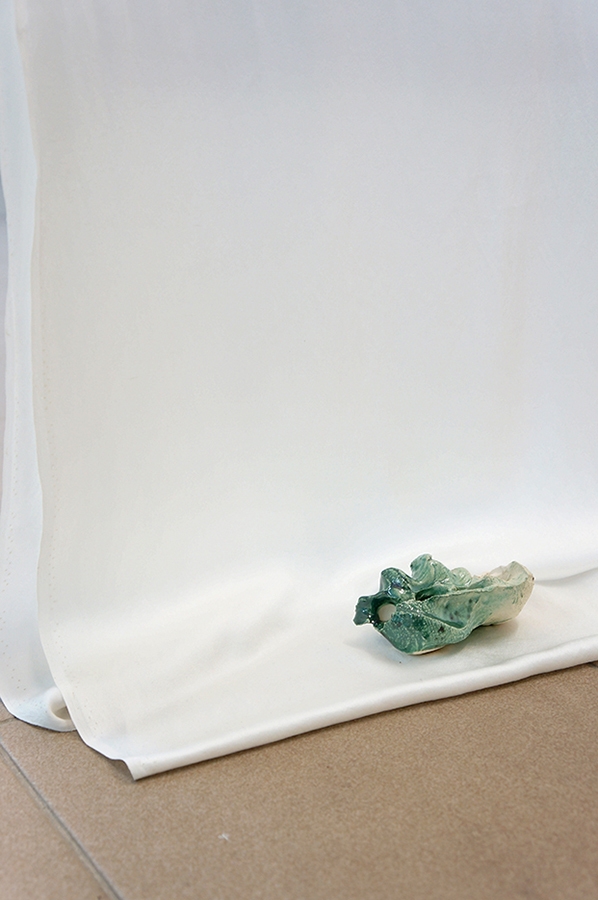
Heavy Handed (Envy), 2013. Glazed Ceramic.